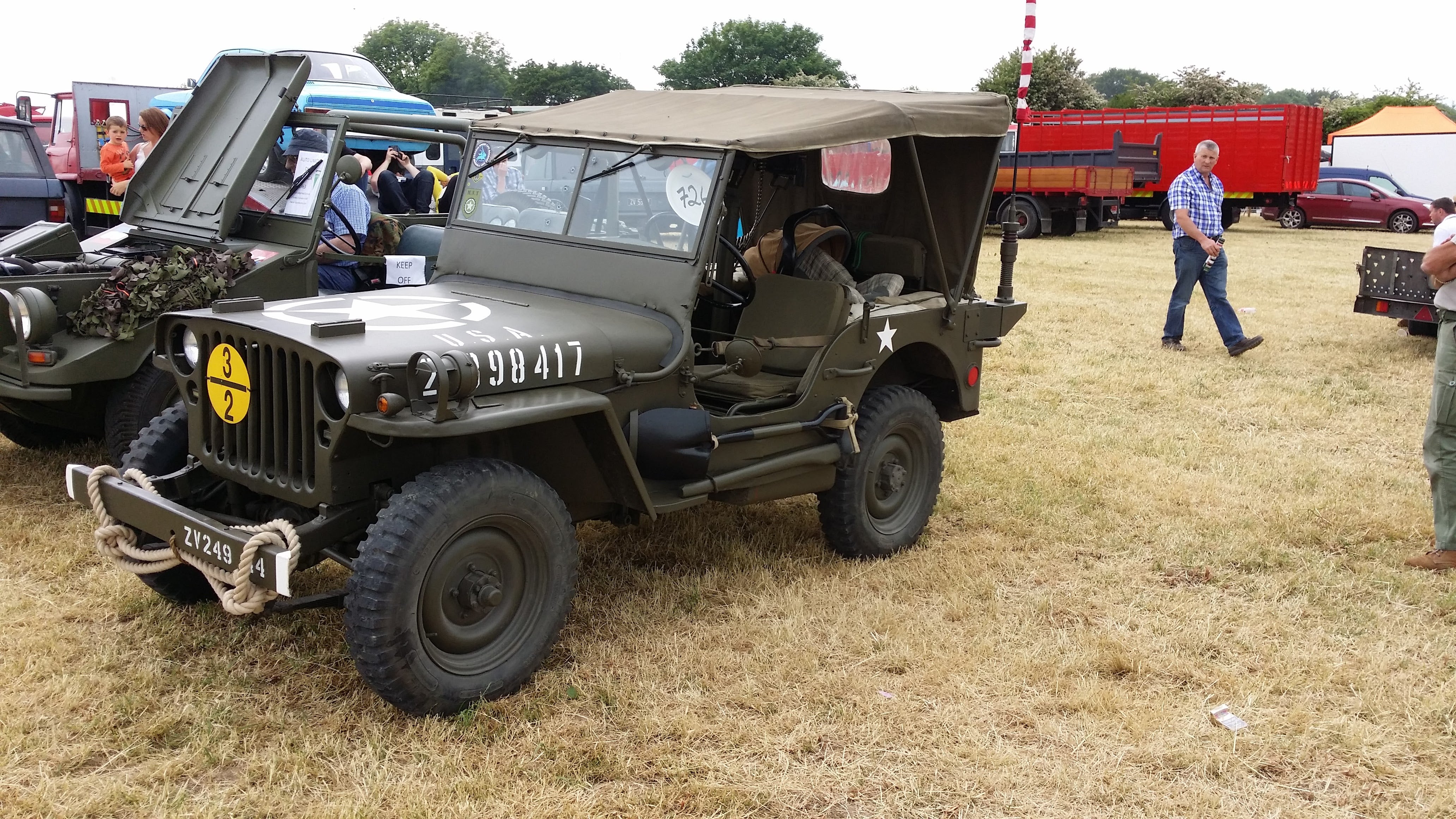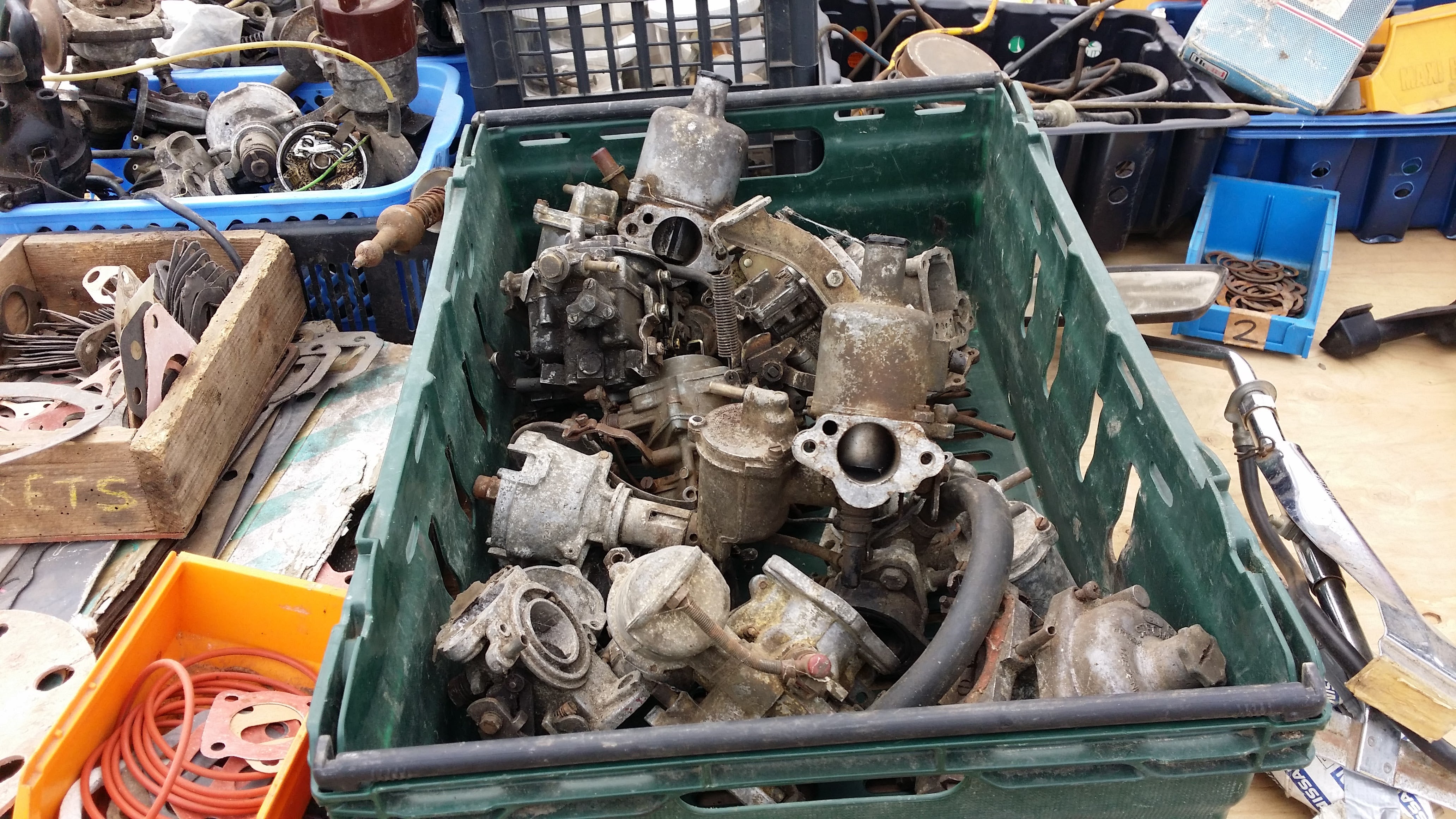 "Cé hé sin" (michael-m-mouse)
"Cé hé sin" (michael-m-mouse)
06/06/2016 at 17:48 • Filed to: Steam and vintage
 2
2
 8
8
 "Cé hé sin" (michael-m-mouse)
"Cé hé sin" (michael-m-mouse)
06/06/2016 at 17:48 • Filed to: Steam and vintage |  2 2
|  8 8 |
Today was a bank holiday, although maybe not for you.
Time to go to a steam and vintage rally then, when we can see all manner of things. Some things powered by external combustion and some by internal
This is a thing (a Foden steam truck) with external combustion.

This is a thing powered by internal combustion. As we know IC engines come in two types, spark ignition and compression ignition. Except that they don’t.
Meet a tractor powered by a hot bulb engine. To start, you get a blowtorch or more usually a gas burner and heat the bulb you can see at the front, just above the axle. This particular one still has the original petrol burner hanging below the axle. When the bulb is hot enough, air and fuel are compressed into it and get hot enough to ignite. Once running the engine should stay hot enough to keep running.

After heating for several minutes you can get cranking. Weirdly, the crank handle looks like the steering wheel. More weirdly, it is. Even more weirdly, it’s common to start the engine backwards, leave it running for a couple of minutes and then to slow it sufficiently that it no longer has enough momentum to get the piston to TDC so that the latter then bounces back at which point you add more fuel and run forwards.
We also had classic cars. Some of these were posh enough to have fancy automatic gearboxes, a fact which could be advertised to the world.


This isn’t a place where American cars are of any interest so there was just one.
This wasn’t it, despite the paintwork. It’s a Hotchkiss M201 and has never been to America in its life.

This is an actual American car.

There were bits of cars for sale, like this. Ten internet points for anyone who can identify the rectangular tail light unit in the middle.

Working with very old cars may require tools in feet and inches so here’s one.

Working with even older cars may require spanners like this.
Who knows what 7/16 W means?

Also on sale were loads of miscellaneous rubbish, like this

You want SU carbs? Here you go.

I came across scary sights. Here’s one, a girl reversing a great big heavy thing.

You want more scary things?
Three pedals. None does what you think.

More? Three pedals. They do what you think but not in that order.

 RamblinRover Luxury-Yacht
> Cé hé sin
RamblinRover Luxury-Yacht
> Cé hé sin
06/06/2016 at 17:54 |
|
7/16W being a Whitworth size - if memory serves, the length of one side of the hexagonal head. For reasons I don’t fully understand, the BSF dependent sizes on Whitworth use a different scale - something like the standardized shaft size for that head size...
That being marked up in W and not BSF, is clearly not for working on such a precision machine as a Land Rover. Clearly.
 RamblinRover Luxury-Yacht
> Cé hé sin
RamblinRover Luxury-Yacht
> Cé hé sin
06/06/2016 at 17:55 |
|
The three pedals, none of which do what we’d think... is that an English Ford with a variant of the T planetary box?
 Cé hé sin
> RamblinRover Luxury-Yacht
Cé hé sin
> RamblinRover Luxury-Yacht
06/06/2016 at 18:07 |
|
Whitworth specified thread as well as size, but the measurement referred to the bolt size, not the distance across flats of the nut. There was a fixed relationship between the two which changed during WW2 to the confusion of many. BSF was a version of Whitworth with a finer thread, hence the F.
Whitworth threads are still used in some sectors.
 KnowsAboutCars
> Cé hé sin
KnowsAboutCars
> Cé hé sin
06/06/2016 at 18:11 |
|
That looks like Vauxhall Viva HC taillight but I’m not sure if it’s that.
Totally unrelated but I think you might have the least commented +10k view Oppo post .
 Cé hé sin
> RamblinRover Luxury-Yacht
Cé hé sin
> RamblinRover Luxury-Yacht
06/06/2016 at 18:12 |
|
It’s a Model T.
 Cé hé sin
> KnowsAboutCars
Cé hé sin
> KnowsAboutCars
06/06/2016 at 18:15 |
|
....is the right answer.

 RamblinRover Luxury-Yacht
> Cé hé sin
RamblinRover Luxury-Yacht
> Cé hé sin
06/06/2016 at 18:52 |
|
I knew that there was a fixed relation between head size and shaft size, but I had been thinking (perhaps wrongly) that one of the two Whitworth family sizing systems referred in some way to the width of the flats (not the distance across flats, but the side size - .575x the flat width). I think the flat size may actually be the same as shaft size in one or the other, which might make us both right. I do know that there’s something more complicated than mere shaft diameter involved with one or the other, because BSF and Whitworth size names differ on the same wrench for the same size.
I repeat, there is a difference between them in wrench sizing. Something like 1/4W = 5/16BSF or something like. There’s a box full of old English wrenchers back at my place all marked to that effect.
I’m perfectly aware that BSF is British Standard Fine, but given the number of Land Rover fasteners I’ve shuffled through with common head sizes between coarse and fine, it’s suggested that something in the sizing is determined differently between the two. It could be one system clinging to the old head sizing relationship, but that would make fasteners within one system have a wrench size name no longer bearing any relationship to the fastener at all. One having a naming convention on the old size, but head relationship on the new, or something like that. That being said, I’m aware of some MGs having metric fasteners with Whitworth head, so it would scarcely be the worst atrocity of the English fastener companies, merely the most widespread.
Anyway, I’ve delved far too deeply into what was chiefly the setup for a Land Rovers as precision machines joke.
 You can tell a Finn but you can't tell him much
> RamblinRover Luxury-Yacht
You can tell a Finn but you can't tell him much
> RamblinRover Luxury-Yacht
06/07/2016 at 10:51 |
|
When I was a kid I always wondered why the wrench size didn’t correspond to the bolt size. It turns out that the British did that back in the day with Whitworth threads . And then they mucked it all up.
(To simplify matters, the term hexagon will be used in this paragraph to denote either bolt head or nut.) Whitworth (
spanner
) markings refer to the bolt diameter rather than the distance across the flats of the hexagon (A/F) as in other standards. Confusion also arises because BSF hexagon sizes can be one size smaller than the corresponding Whitworth hexagon. This leads to instances where a spanner (wrench) marked
7/16BSF
is the same size as one marked
3/8W
. In both cases the spanner jaw width of 0.710 in, the width across the hexagon flat, is the same. However, in World War II the size of the Whitworth hexagon was reduced to the same size as the equivalent BSF hexagon purely to save metal during the war
[
citation needed
]
and they never went back to the old sizes afterwards. Thus it is today uncommon to encounter a Whitworth hexagon which takes the nominally correct spanner. Spanners in this case may be marked
7/16BS
to indicate that they have a jaw size of 0.710 in and are designed to take either the (later)
7/16 BSW
or
7/16 BSF
hexagon.
[3]
